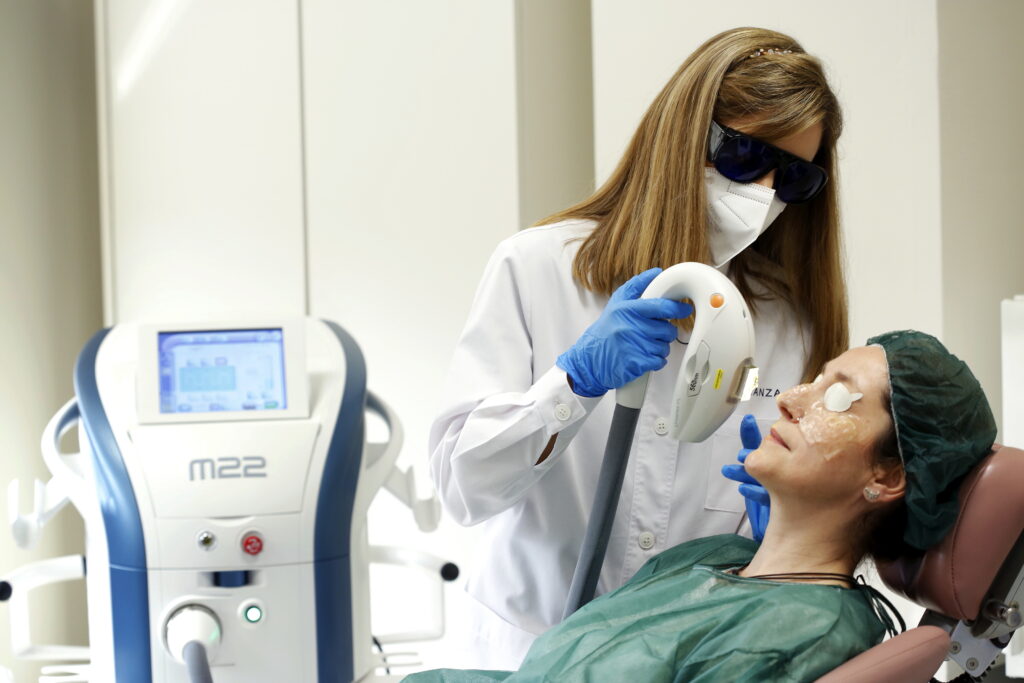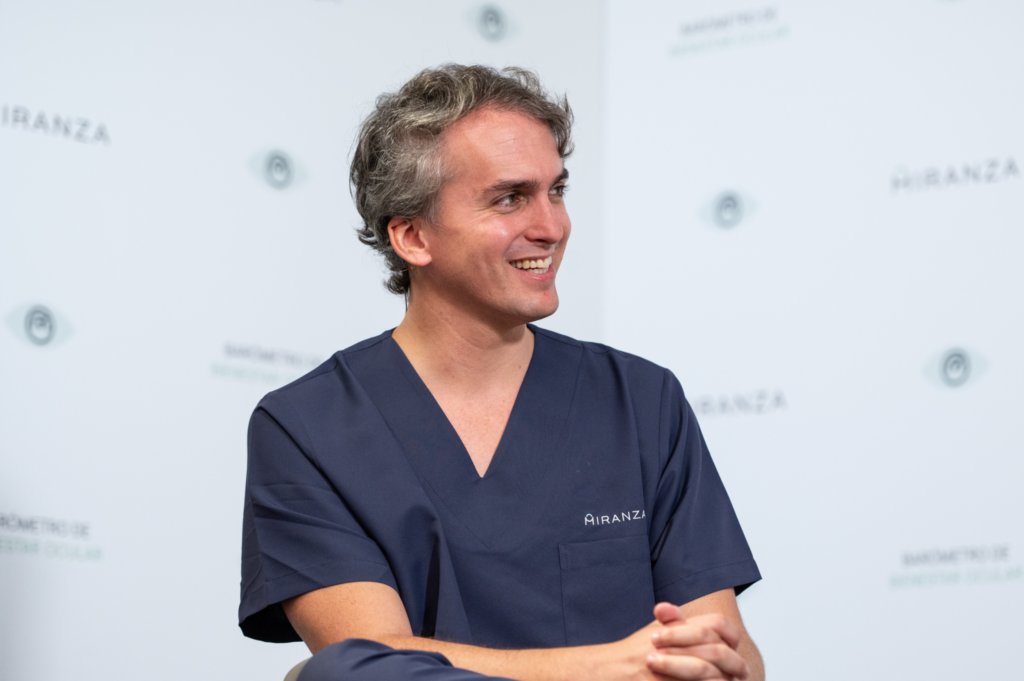
A study headed by ophthalmologists from Miranza shows that IPL, applied before and after laser refractive surgery, can fight dry eye.
The first clinical trial investigating the preventive role of Intense Pulsed Light (IPL) as a prophylactic treatment in healthy patients subject to refractive surgery, the main side effect of which is dry eye
Preventive treatment with Intense Pulsed Light, also known as IPL, has proven effective in treating discomfort from dry eye following laser refractive surgery. This conclusion is reached in a study published in the Asia-Pacific Journal of Ophthalmology and headed by Dr Jorge Alió del Barrio, a specialists at Vissum Grupo Miranza. The study seeks to evaluate the improvements involved in applying this therapy before and after surgery in order to prevent diseases of the ocular surface while patients are recovering.
IPL, a painless, effective treatment
Based on the fact that the main risk involved in laser refractive surgery is the development of dry eye during the first few weeks or months after surgery, the research was based on the preventive use of intense pulsed light, a painless treatment applied in the consulting room and often used for diseases such as dry eye and blepharitis, which is the inflammation of the edge of the eyelid.
The study “Luz pulsada intensa perioperatoria para prevenir y mejorar los síntomas del ojo seco post cirugía refractiva corneal con láser” (“Perioperative intense pulsed light to prevent and improve the symptoms of dry eye following corneal refractive surgery by laser”) is the first clinical trial to investigate the role of perioperative IPL therapy as a prophylactic treatment in healthy individuals subjected to corneal refractive surgery by laser. To conduct it, IPL treatment was provided to half the patients eligible for laser refractive surgery, whereas the other half were given a simulated treatment. According to Dr Jorge Alió del Barrio, “the patients who received the intense pulsed light before and after surgery had fewer symptoms of postoperative dry eye and also fewer signs of alterations to the ocular surface”.
The specialist explains that “this therapy emits an energy in the skin around the eyes and the eyelids that has an anti-inflammatory and anti-microbial effect. This results in improved secretion of the Meibomian glands, which are responsible for lubricating the eye’s surface, providing the tear with fat to prevent it from evaporating, thus ensuring correct eye hydration”.

New therapeutic options for patients
The findings of this research are good news for patients eligible for laser refractive surgery who have some degree of inflammation of the eyelids (blepharitis) and are at risk of developing dry eye or symptoms of dryness following surgery because, from now on, they will be able to receive a new therapeutic option aimed at improving their quality of life.
“We ophthalmologists will now have a therapeutic weapon beyond the artificial tear, as we can attempt to avoid dry eye which is the main complication of laser refractive surgery”, concludes Dr Alió del Barrio.
Preventing dry eye: a priority to speed up post-operative recovery
Dry-eye syndrome is a condition that appears when the tears are unable to lubricate the eye properly, causing discomfort to the eyes and visual problems, and in some cases injuries to the ocular surface that could damage the cornea and the conjunctiva.
This disorder affects almost 350 million people worldwide and has significant repercussions on their quality of life, given the constant sensation of grit when blinking and possible alterations to eyesight quality. Improving these symptoms means that patients feel better, with no discomfort due to dry eye, and this also speeds up the recovery process.
Risk factors and prevention of dry-eye syndrome
Some of the most common risk factors for dry eye are ageing, particularly over the age of 50, and gender, as the hormone changes experienced by women during pregnancy, the use of contraceptives and menopause could lead to the lack of tears. Refractive surgery is another aspect to consider, along with certain lifestyle-related elements, such as smoking, dry atmospheres, exposure to screens and the use of contact lenses.
Involvement and results of the trial
The research, which was conducted over two years with the purpose of preventing dry eye and speeding up post-operative recovery in patients eligible for laser refractive surgery, involved up to 10 professionals from the refractive surgery unit and from R&D, including four ophthalmology physicians.